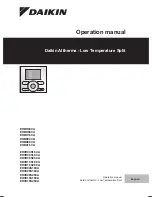
DL8000 Preset Instruction Manual
Revised February-2016
Modbus Communications
B-1
Appendix B – Modbus Communications
This appendix describes how to configure a DL8000 for Modbus
communications.
Note
:
Refer to
Chapter 3, Point Types
, in the
Preset Protocol
Specifications Manual
(part D301254X012) for a discussion of
the point types and parameters associated with the DL8000
product.
B.1 Modbus Communications
The DL8000 includes the ability to communicate using the Modbus
protocol. This enables you to integrate the DL8000 and Modbus devices
into the same host/slave system.
The DL8000 can act either as a slave or a host device.
The Modbus Master mode of operation (enabled on the ROC > Comm
Ports screen) allows the DL8000 to simulate a master device that can
poll other devices for data and then store that data for parameter
updates, for use in FST Registers, user programs, and DS800 programs.
The DL8000 can also send commands to set outputs and write data to a
slave device. For more information on Modbus master configuration
and functionality, refer to
Section A.6, Modbus Master Table
.
In slave mode, the data link between the host device and the DL8000
requires the use of one of the following communications ports:
Ethernet Port on the CPU.
EIA-232 (RS-232) Serial Communications Card.
EIA-485 (RS-485) Serial Communications Card.
Dial-up Modem Communications Card.
Note
:
Master mode supports the Comm 2 to Comm 5 communication
ports. The LOI and Comm 1 (Ethernet) ports do not support
Modbus master mode.
If a serial or modem communications port is configured with a port
owner of ROC Plus Protocol/Modbus Slave, the DL8000 automatically
determines if the incoming communication request is in ROC protocol
or Modbus protocol. The DL8000 responds using the same protocol as
the incoming request.
The Ethernet communications port automatically determines if the
incoming communication request is in ROC protocol, Modbus RTU
encapsulated in TCP/IP, or Modbus TCP/IP protocol. The DL8000
responds using the same protocol as the incoming request.
















































